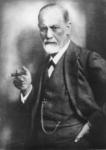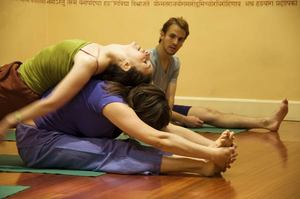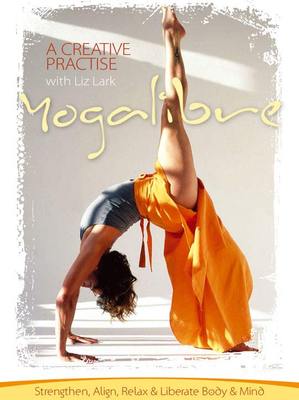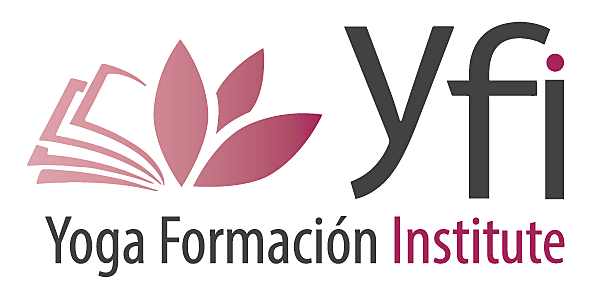Posts tagged "yoga"

Exercise fuels the brain's stress buffers
The article below is excerpted from the American Psychological Association help center. I thought you might find it interesting to learn directly what the psychology profession believes about the positive impact of exercise on stress.
Exercise fuels the brain's stress buffers
Exercise may improve mental health by helping the brain cope better with stress, according to research into the effect of exercise on neurochemicals involved in the body's stress response.
Preliminary evidence suggests that physically active people have lower rates of anxiety and depression than sedentary people. But little work has focused on why that should be. So to determine how exercise might bring about its mental health benefits, some researchers are looking at possible links between exercise and brain chemicals associated with stress, anxiety, and depression.
So far there's little evidence for the popular theory that exercise causes a rush of endorphins. Rather, one line of research points to the less familiar neuromodulator norepinephrine, which may help the brain deal with stress more efficiently.
Work in animals since the late 1980s has found that exercise increases brain concentrations of norepinephrine in brain regions involved in the body's stress response.
Norepinephrine is particularly interesting to researchers because 50 percent of the brain's supply is produced in the locus coeruleus, a brain area that connects most of the brain regions involved in emotional and stress responses. The chemical is thought to play a major role in modulating the action of other, more prevalent neurotransmitters that play a direct role in the stress response. And although researchers are unsure of exactly how most antidepressants work, they know that some increase brain concentrations of norepinephrine.
But some psychologists don't think it's a simple matter of more norepinephrine equals less stress and anxiety and therefore less depression. Instead, they think exercise thwarts depression and anxiety by enhancing the body's ability to respond to stress.
Biologically, exercise seems to give the body a chance to practice dealing with stress. It forces the body's physiological systems - all of which are involved in the stress response - to communicate much more closely than usual: The cardiovascular system communicates with the renal system, which communicates with the muscular system. And all of these are controlled by the central and sympathetic nervous systems, which also must communicate with each other. This workout of the body's communication system may be the true value of exercise; the more sedentary we get, the less efficient our bodies in responding to stress.
Thanks to Rod K. Dishman, PhD, of the University of Georgia, and Mark Sothmann, PhD, of Indiana University's School of Medicine and School of Allied Health Sciences.
Yoga: Spiritual or not?
A Provocative Comment
The other day in a workshop a student commented that she had not practiced Yoga for the past dozen years, but rather that she had done stretching. I knew this student for many years and was curious to know what she meant exactly. I thought she had been practicing Yoga.
The Spiritual Part
As she began to explain I realized that she meant that by simply doing asana classes she had not practiced meditation nor been introduced to the spiritual aspects of the tradition.

A Salvific Path
I was very grateful for this reminder that Yoga is and was, at least in India, a spirtitual practice. We often forget that the roots of Yoga, especially Jñana Yoga, Raja Yoga and Bhakti Yoga, are spiriiual or religious practices meant to lead to spiritual realization (moksa) or enlightenment.
Our point of View
I have lived and studied the ancient and modern traditions of Yoga for most of my life. The subject is vast and diverse. Many in the West have separated Yoga from its religious roots and simply focused on the body and the asana practice, holding the belief that the body is the source of all experience - modern materialistic monism. That is OK. However, we must respect that many seek existential comfort and support from the spiritual (metaphysical) tradition of Yoga. Each student has their own beliefs and motives for pursuing the Yoga practice. This is the fascinating paradox of this practice in the contemporary world. Those who perform the same Hatha Yoga may do so from diametrically opposed points of view.
Yoga and Psychotherapy
Psychology and Yoga
 I have used psychotherpay techniques with Yoga students and many different Yoga techniques with psychotherapy clients over the past 16 years or longer. As both practices are concerned with improving individual quality of life and personal happiness and fullfilment, I see no conflict between the two.
I have used psychotherpay techniques with Yoga students and many different Yoga techniques with psychotherapy clients over the past 16 years or longer. As both practices are concerned with improving individual quality of life and personal happiness and fullfilment, I see no conflict between the two.
 Freudianism
Freudianism
Yoga and Freudianism were not the best of friends; but, more recent research suggests that we are not trapped by the past. We keep developing and changing with time. Our current understanding supports the possibility of personal growth and development.
American Psychological Association
The American Psychological Association has published a review of some favourable studies of Yoga used in psychotherapy. So slowly divergent world views start coming closer together. Each informs the other. "The evidence is showing that Yoga really helps change people at every level," says Stanford University health psychologist and Yoga instructor Kelly McGonigal, PhD. I have quoted from their article on my web page.
How your Flexibility affects your Arteries
"Happy New Year Heart Attack"
Heart attacks are more common during the winter months than in any other season. A study of death certificates published in Circulation in 2004, confirmed the association of heart-attack deaths during the winter. The results were referred to as “The ‘Merry Christmas Coronary’ and ‘Happy New Year Heart Attack’ Phenomenon.”
Paschimotanasana Test of Your Arteries
Why heart-attack deaths surge during the winter holidays is not clear, but cardiologists have some informed guesses. A new study published in the journal Heart and Circulatory Physiology suggests, that there may be a way to test at least one element of your heart’s health right in your own home, right now. Sit on the floor with your legs out in front. Bend from the hips. Can you touch your toes? If you can, then your cardiac arteries are probably flexible.
The study recruited 526 healthy adults between the ages of 20 and 83 and had them perform the forward bend test described above, and measured their extensions precisely. Researchers sorted the subjects into either the high-flexibility group or the poor-flexibility group.
Next, researchers estimated how flexible their arteries were. Supple arteries let the blood move freely. Stiff arteries make your heart work harder and over time could lead to a greater risk for heart attack and stroke, according to researchers at North Texas University.
Correlation if over 40
The researchers found a correlation between inflexible bodies and inflexible arteries in subjects older than 40. Adults with poor forward bends tended to have arterial stiffness. The study concluded that “a less flexible body indicates arterial stiffening, especially in middle-aged and older adults.” This correlation was not found in those under 40.
Arterial stiffening does not necessarily lead to arterial disease, Mr. Yamamoto says. Some arterial stiffening is inevitable with age; but the stiffer your arteries, the less efficient your heart is. Mr. Yamamoto says, that alterations in the composition of muscle tissues in the lower back could be occurring in the arterial walls at the same time.
Good News
The good news is that increasing your flexibility might somehow loosen up your arteries. That was the unreplicated finding of a small study at the University of Texas at Austin in 2008. The study examined whether weight lifting increased arterial stiffness. (It didn’t). The control group stretched. They were not expected to change cardiac function, but over the course of 3 months they increased the flexibility of their arteries by about 20 percent.
Mr. Yamamoto and his researchers are conducting a large study to determine how stretching affects the arteries. Until the results are in, Mr. Yamamoto says, it’s best to consider your flexibility as a probable indication of your arterial elasticity. “If you can touch your toes in the sit-and-reach test, your flexibility is good,” he says. Tight arteries are not necessarily diseased arteries; they’re just not fit.
Yoga
For those of you who practice Yoga regularly it seems I have just found another reason for you to keep it up. If you are new to Yoga now is a good time to start.
My Orientation
My orientation
I have been interested in inner life development since I encountered Christian mysticism in my adolescence. My curiousity led me to study Buddhism and Hinduism and practice oriental meditation. Now as I practice psychotherapy I find myself straddling two different orientations - Eastern mysticism and Western psychology.
A common aim
Both traditions have a common aim - to alleviate personal suffering. The Buddha stated from the begining of his teachings that all is suffering (sarvam dukkha) and that his noble eightfold path is a cure. Psychology literally means the study of the soul and psychotherapy is the use of any procedures that have palliative effects upon any mental, emotional or behavioural disorder. In other words the use of any techinique to reduce human suffering. Both have the same intention. I apply them both.
Combination Psychology
Recently, Western psychology discovered the wisdom of the Eastern traditions. Psychologists such as Jan Kabat-Zinn, Z.V. Segal, J. D. Teasdale and many others have found successful applications for approaches such as mindfulness in combination with Western techniques. I find this trend encouraging.
Integral Psychology
Ken Wilber is an American philosopher who has attempted to integrate the Eastern and Western wisdom literature in an attempt to create an 'Integral Psychology'. He has begun a discussion about the possible integration of premodern, modern and postmodern sources in a systematic embrace rather than the current eclecticism
Example Post - English
Header 2
Short paragraph.
Examples for an internal link and for an external link. Please note that I've used the toolbar above to create these links.

Header 3 for long paragraph
Lorem ipsum dolor sit amet, consectetur adipisicing elit, sed do eiusmod tempor incididunt ut labore et dolore magna aliqua. Ut enim ad minim veniam, quis nostrud exercitation ullamco laboris nisi ut aliquip ex ea commodo consequat. Duis aute irure dolor in reprehenderit in voluptate velit esse cillum dolore eu fugiat nulla pariatur. Excepteur sint occaecat cupidatat non proident, sunt in culpa qui officia deserunt mollit anim id est laborum.
Header 4 for blockquote
Lorem ipsum dolor sit amet, consectetur adipisicing elit, sed do eiusmod tempor incididunt ut labore et dolore magna aliqua. Richard Dawkins
List Examples
Unordered, Bullet List
- Fresh figues
- Cookies
- Chocolate bars
Ordered, Numbered List

Things to do.
- Create many posts
- Use all features of the blog
- Remove or mark as drafts the posts which we don't want to publish right away
- Prepare the blog for the public
- Send email newsletter to announce it to students
Om Shantih

